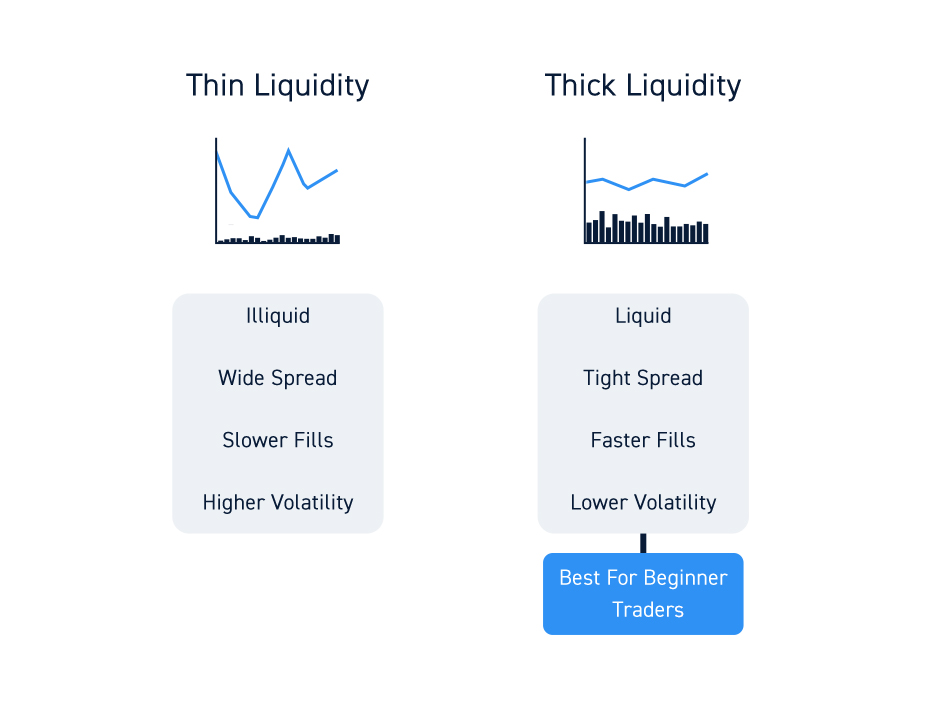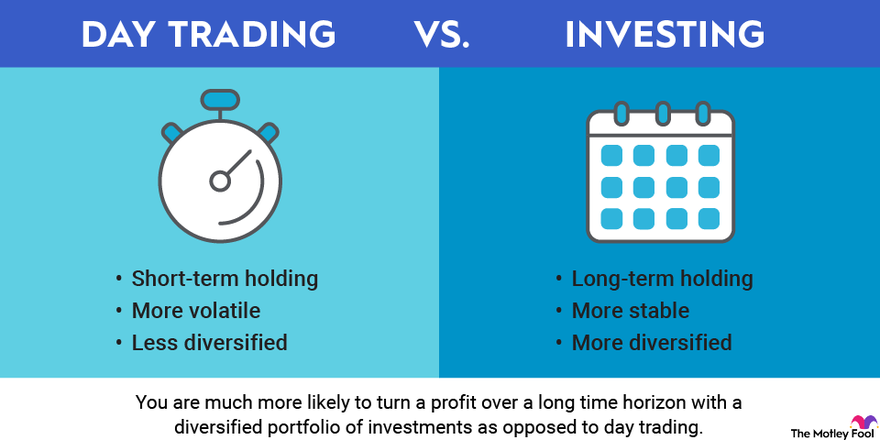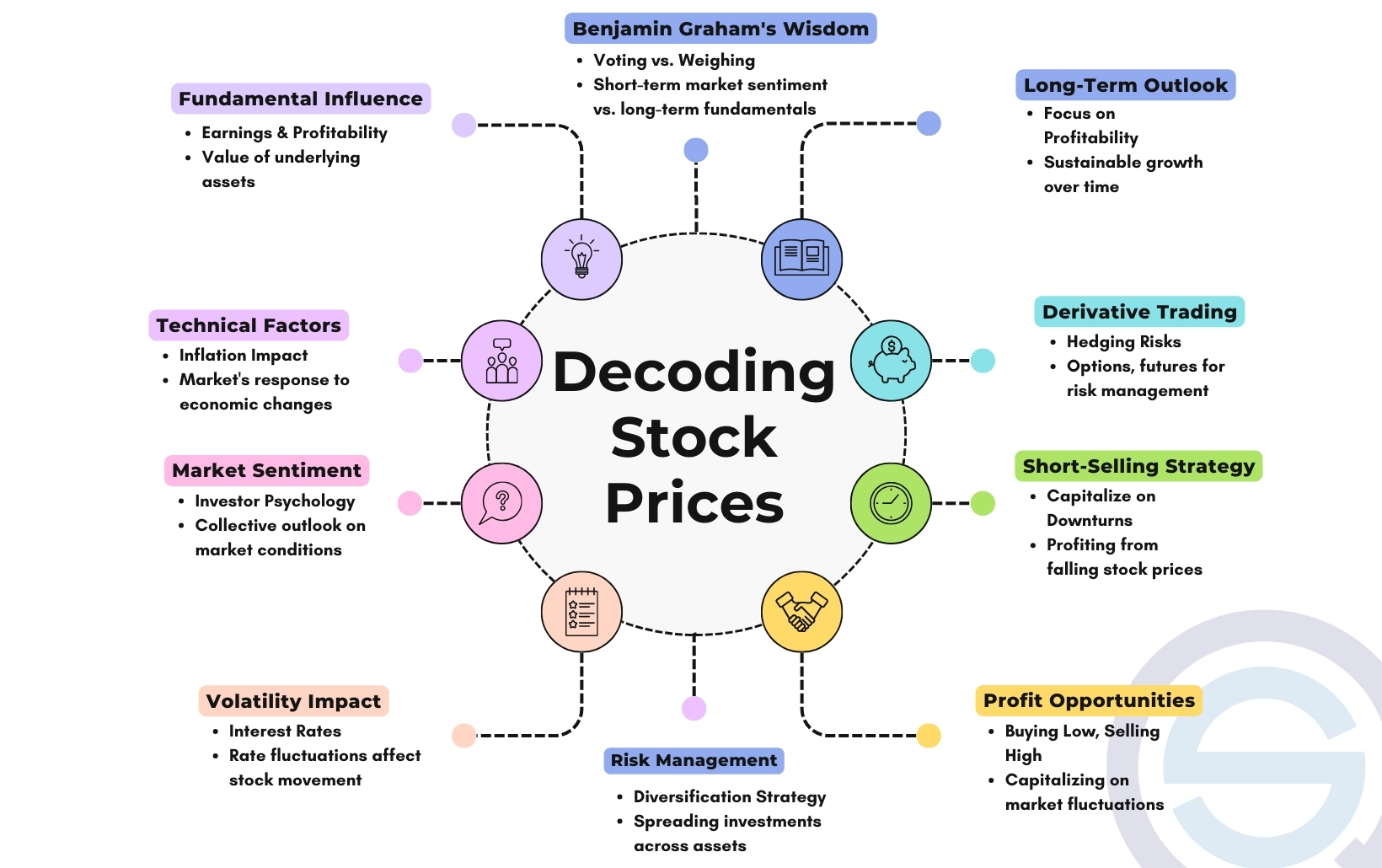Did you know that the average day trader spends more time analyzing stocks than a chef spends perfecting a soufflé? Choosing the right stocks for day trading is crucial and requires a strategic approach. In this article, we explore key factors like volatility, industry trends, and trading volume that influence stock selection. You'll learn how to identify high-volatility stocks, utilize stock screeners, and assess liquidity. We also discuss the impact of news events, technical indicators, and earnings reports on your choices. Lastly, we’ll highlight common mistakes to avoid and provide tips for creating a watchlist to enhance your day trading success. With insights from DayTradingBusiness, you'll be better equipped to navigate the fast-paced world of day trading.
What are the key factors to consider when choosing stocks for day trading?
When choosing stocks for day trading, consider these key factors:
1. Liquidity: Look for stocks with high trading volumes to ensure you can enter and exit positions quickly.
2. Volatility: Select stocks with significant price movements throughout the day, as this creates opportunities for profit.
3. News and Events: Monitor stocks that are affected by news releases, earnings reports, or economic data, as these can lead to sharp price changes.
4. Technical Indicators: Use charts and indicators like moving averages and RSI to identify potential entry and exit points.
5. Market Sentiment: Pay attention to overall market trends and investor sentiment, which can impact stock performance.
6. Sector Performance: Focus on sectors that are currently trending or in the news, as they often experience more volatility.
7. Risk Management: Always assess your risk tolerance and set stop-loss orders to protect your capital.
These factors will help you identify stocks that are suitable for day trading strategies.
How do I identify high-volatility stocks for day trading?
To identify high-volatility stocks for day trading, look for stocks with a high average true range (ATR) over the past few weeks. Check for significant price movements, ideally 3% or more in a single day. Use stock screeners to filter for increased trading volume, as higher volume often indicates volatility. Monitor news and earnings reports, as these can trigger sharp price swings. Finally, keep an eye on sectors known for volatility, like biotech or technology, and use chart patterns to spot potential breakout stocks.
What are the best industries for day trading stocks?
The best industries for day trading stocks include technology, healthcare, financial services, and energy. These sectors often have high volatility and liquidity, which create opportunities for quick price movements. Focus on tech for rapid growth stocks, healthcare for biotech news, financials for earnings reports, and energy for commodity price fluctuations. Always analyze market trends and news to identify potential stocks within these industries.
How can I use stock screeners to find day trading opportunities?
To find day trading opportunities using stock screeners, start by setting specific criteria. Look for stocks with high volatility and significant price movement, ideally with a daily range of at least 2-3%. Filter for stocks with high trading volume, as this indicates liquidity, allowing you to enter and exit trades easily. Use technical indicators like moving averages or RSI to identify potential entry and exit points. Additionally, screen for stocks with recent news or earnings reports; these can lead to sharp price movements. Finally, monitor the screener regularly to catch real-time opportunities as market conditions change.
What role does trading volume play in selecting stocks for day trading?
Trading volume is crucial in selecting stocks for day trading because it indicates the level of activity and liquidity. High trading volume ensures you can enter and exit positions quickly without significant price impact. It also suggests strong interest, which can lead to more predictable price movements. Stocks with low volume may experience slippage, making it harder to execute trades at desired prices. Focus on stocks with consistent high volume for better opportunities and reduced risk.
How do news events impact stock selection for day trading?
News events significantly impact stock selection for day trading by influencing price movements and volatility. Traders often look for stocks with recent news, such as earnings reports, mergers, or regulatory changes, as these can lead to rapid price fluctuations. Positive news can drive prices up, while negative news can cause sharp declines. Traders use news to gauge market sentiment and identify potential trading opportunities. Monitoring economic indicators and breaking news helps in making informed decisions about which stocks to trade for maximum profit potential.
What technical indicators should I use for day trading stock selection?
For day trading stock selection, use the following technical indicators:
1. Moving Averages: Use the 50-day and 200-day moving averages to identify trends.
2. Relative Strength Index (RSI): Look for overbought or oversold conditions, targeting levels above 70 or below 30.
3. Bollinger Bands: Monitor price volatility and potential reversals as prices touch the upper or lower bands.
4. Volume: Analyze trading volume to confirm trends and identify potential breakouts.
5. MACD (Moving Average Convergence Divergence): Use it to spot momentum shifts and potential buy or sell signals.
6. Stochastic Oscillator: Assess momentum and identify overbought or oversold conditions.
Combine these indicators for a comprehensive approach to stock selection in day trading.
How can I assess a stock's liquidity for day trading?

To assess a stock's liquidity for day trading, check its average daily trading volume; look for at least 1 million shares. Analyze the bid-ask spread; narrower spreads indicate better liquidity. Use level 2 quotes to gauge real-time order flow and depth. Monitor the stock's price movements during market hours for volatility; higher volatility often correlates with greater liquidity. Lastly, ensure the stock is listed on a major exchange, as these typically have more liquid markets.
What are the risks of picking the wrong stocks for day trading?

Picking the wrong stocks for day trading can lead to significant losses. Key risks include:
1. Volatility: High volatility can result in rapid price changes, leading to unexpected losses.
2. Liquidity Issues: Low liquidity can make it difficult to enter or exit positions, causing slippage.
3. Market Sentiment: Stocks influenced by negative news or sentiment can drop quickly, impacting your trades.
4. Poor Research: Inadequate analysis can lead to bad decisions, missing profitable opportunities or holding losing stocks too long.
5. Overtrading: Picking too many stocks can dilute focus and increase transaction costs.
Always conduct thorough research and monitor market trends to mitigate these risks.
How do I create a watchlist for day trading stocks?
To create a watchlist for day trading stocks, start by identifying stocks with high volatility and volume. Use a stock screener to filter for criteria like price changes, trading volume, and market capitalization. Focus on stocks in sectors with recent news or events. Monitor pre-market activity to gauge interest. Regularly update your list based on performance and market trends. Lastly, keep an eye on technical indicators like moving averages and RSI to refine your selections.
Learn about How to Create a Day Trading Checklist
What timeframes should I consider when day trading stocks?
When day trading stocks, consider timeframes like the 1-minute, 5-minute, and 15-minute charts. These shorter timeframes help identify quick entry and exit points. Additionally, keep an eye on the daily chart for overall trends. Use these various timeframes to spot key levels of support and resistance, ensuring you make informed decisions in real-time.
## What Are the Best Strategies for Choosing Stocks for Day Trading Today?
To choose stocks for day trading, look for high volatility, strong volume, and news catalysts. Focus on stocks with a price range that allows for quick profits and ensure they have tight spreads. Use technical analysis to identify entry and exit points, and keep an eye on market trends.
Learn more about: Best Stocks for Day Trading Today
Learn about Best Day Trading Strategies for Volatile Markets
How do earnings reports influence stock choices for day trading?

Earnings reports significantly influence stock choices for day trading by providing crucial information about a company's performance. Traders analyze earnings surprises, guidance, and revenue trends to gauge potential price movements. Positive earnings can lead to rapid price increases, while negative results often trigger sell-offs. Traders seek volatility and liquidity around these reports, making stocks with upcoming earnings announcements prime candidates. Monitoring analyst reactions and market sentiment post-report helps refine trading strategies.
What are the characteristics of successful day trading stocks?
Successful day trading stocks typically have high liquidity, allowing for quick buying and selling. They also exhibit strong volatility, providing price movement opportunities. Look for stocks with a high average daily volume, as this indicates active trading. Additionally, focus on stocks with clear support and resistance levels to identify entry and exit points. Earnings reports and news catalysts can also drive significant price changes, making those stocks attractive for day trading.
How can I track stock performance for day trading?
To track stock performance for day trading, use real-time market data platforms like TradingView or ThinkorSwim. Set up watchlists for stocks you're interested in and monitor key indicators like price movement, volume, and volatility. Utilize charts with technical analysis tools to identify trends and entry/exit points quickly. Apps like Robinhood or Webull also provide live updates and alerts for significant price changes. Finally, stay informed on news and events that could impact stock prices throughout the trading day.
What are common mistakes to avoid when choosing stocks for day trading?
1. Ignoring volume: Always choose stocks with high trading volume; low volume can lead to liquidity issues.
2. Lack of research: Failing to analyze stock trends, news, and earnings reports can lead to poor decisions.
3. Overtrading: Avoid trading too frequently; focus on quality setups rather than quantity.
4. Chasing losses: Don’t let emotions drive your trades; stick to your strategy and avoid revenge trading.
5. Neglecting risk management: Always set stop-loss orders to protect your capital from significant losses.
6. Focusing on too many stocks: Concentrate on a few stocks to monitor them closely instead of spreading yourself too thin.
7. Ignoring market conditions: Pay attention to overall market trends; even strong stocks can falter in a downturn.
8. Relying solely on technical indicators: Combine technical analysis with fundamental insights for well-rounded decisions.
Learn about Common Mistakes When Day Trading Stocks
How do I develop a strategy for selecting stocks to day trade?
To develop a strategy for selecting stocks to day trade, focus on these key steps:
1. Liquidity: Choose stocks with high trading volume. This ensures you can enter and exit positions easily.
2. Volatility: Look for stocks that show significant price movements. Higher volatility can lead to greater profit opportunities.
3. News and Events: Monitor news, earnings reports, and other events that can impact stock prices. Stocks reacting to news can offer good day trading chances.
4. Technical Analysis: Use charts and indicators to identify trends and patterns. Tools like moving averages, RSI, and MACD can help inform your decisions.
5. Watchlists: Create a watchlist of stocks that meet your criteria. Regularly update it based on market conditions.
6. Risk Management: Set specific entry and exit points. Use stop-loss orders to limit potential losses.
7. Practice: Start with a demo account to test your strategy without financial risk.
By combining these elements, you can build a solid approach for selecting stocks to day trade effectively.
Learn about How to Develop Your Own Scalping Strategy for Day Trading
Conclusion about How to Choose Stocks for Day Trading
In conclusion, selecting the right stocks for day trading requires a strategic approach that incorporates volatility, trading volume, liquidity, and timely news events. Utilizing stock screeners and technical indicators can enhance your ability to identify suitable candidates. By understanding the risks and establishing a solid watchlist, you position yourself for better trading outcomes. Remember, a well-defined strategy is key to navigating the dynamic stock market effectively. For more insights and expert guidance, DayTradingBusiness is here to support your trading journey.
Learn about How to Choose Stocks for Day Trading Scalping